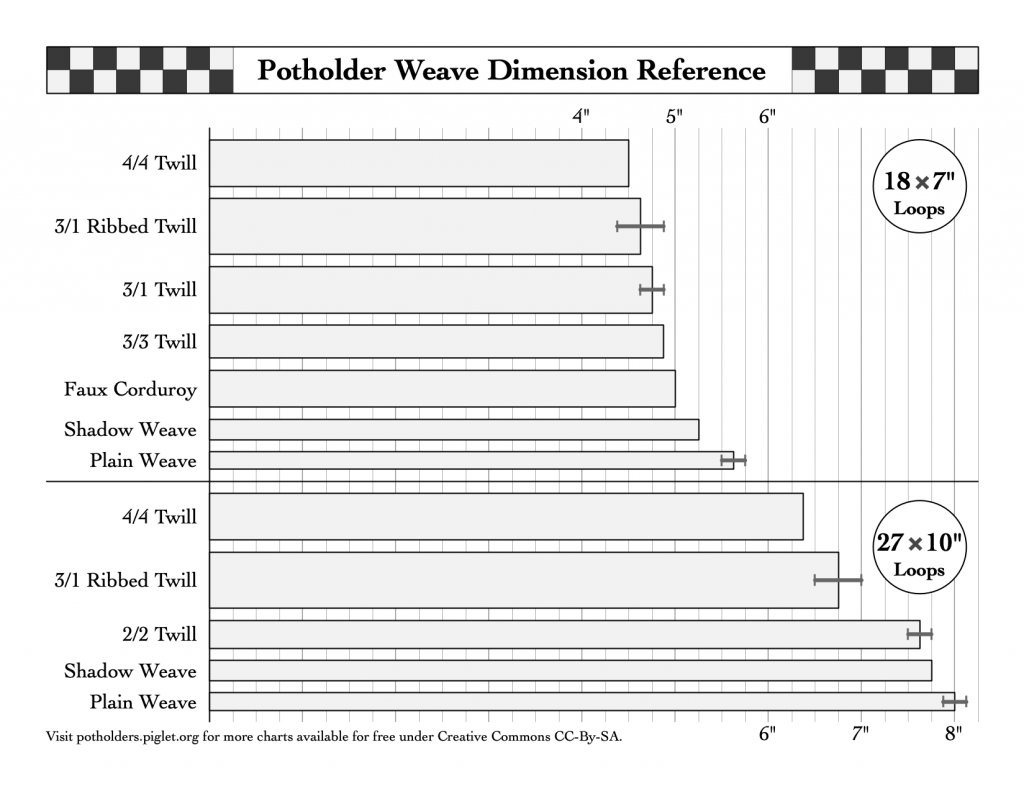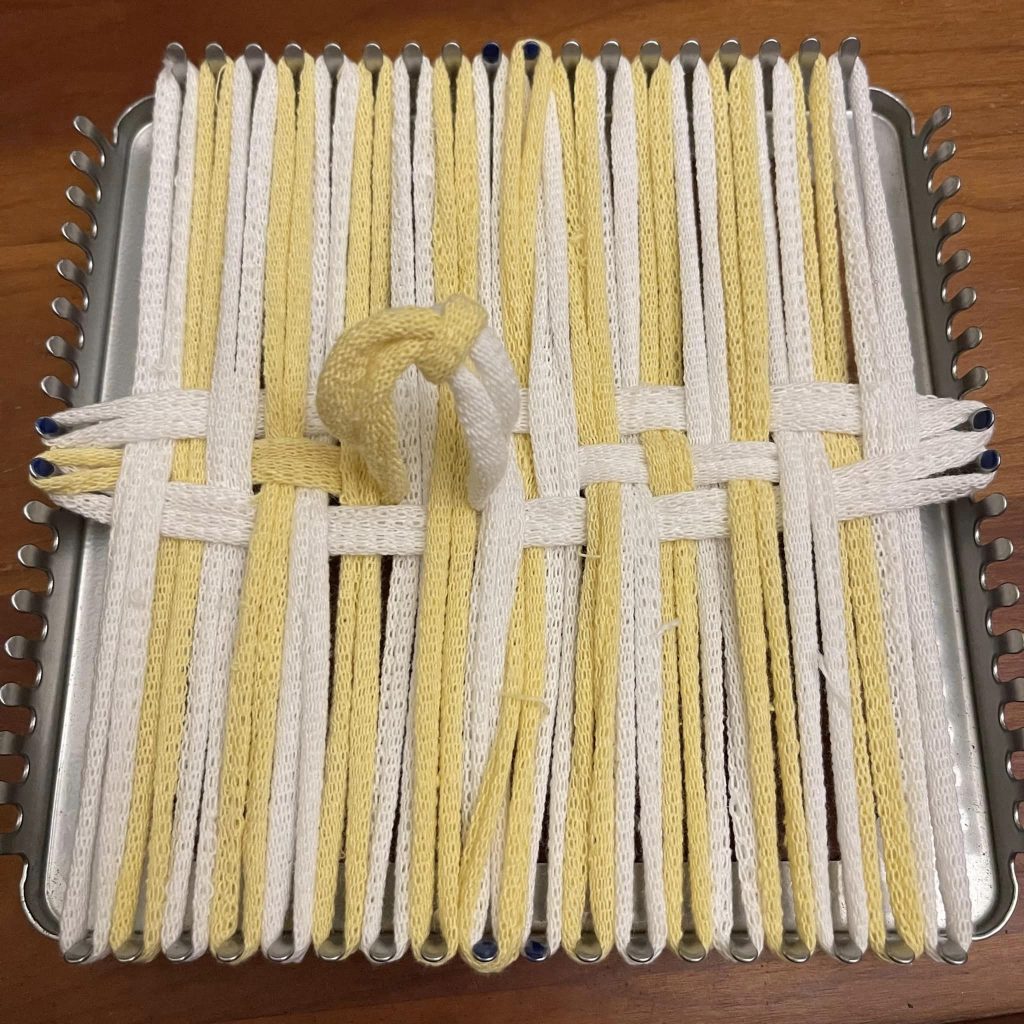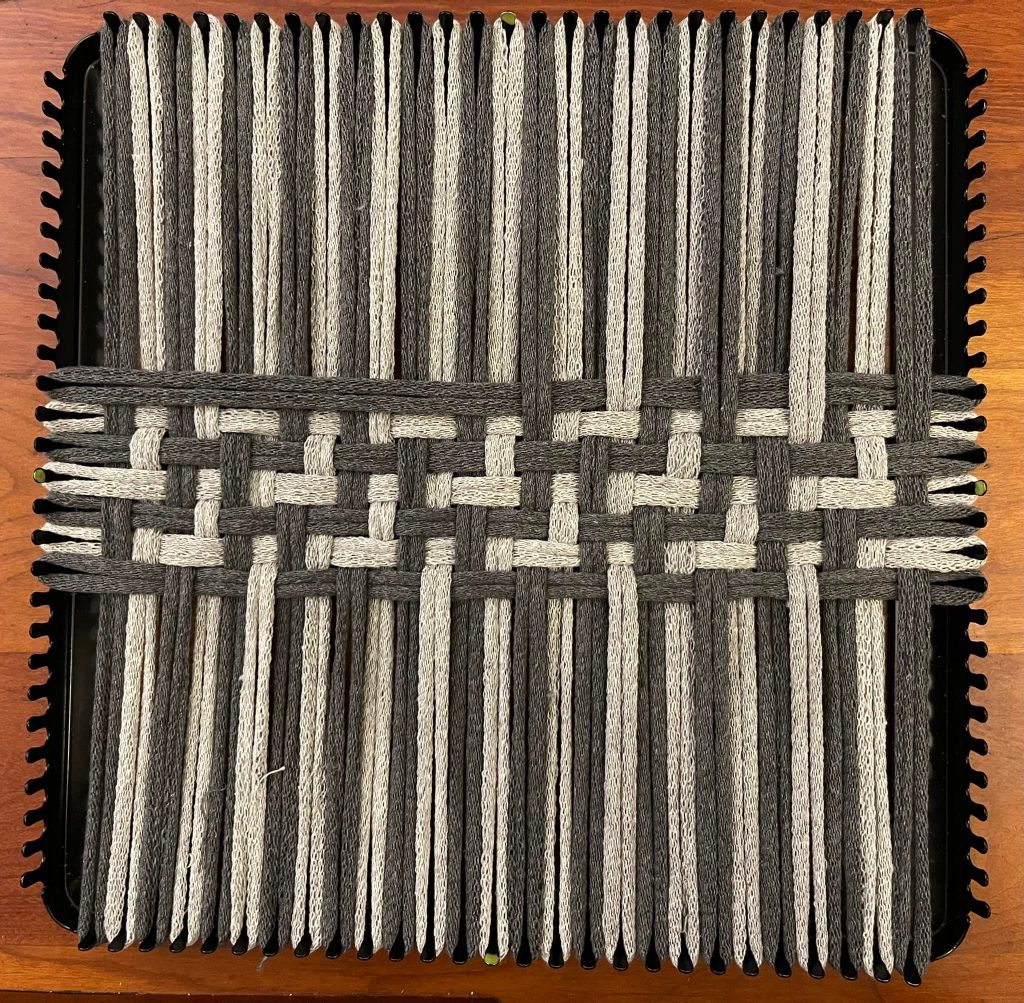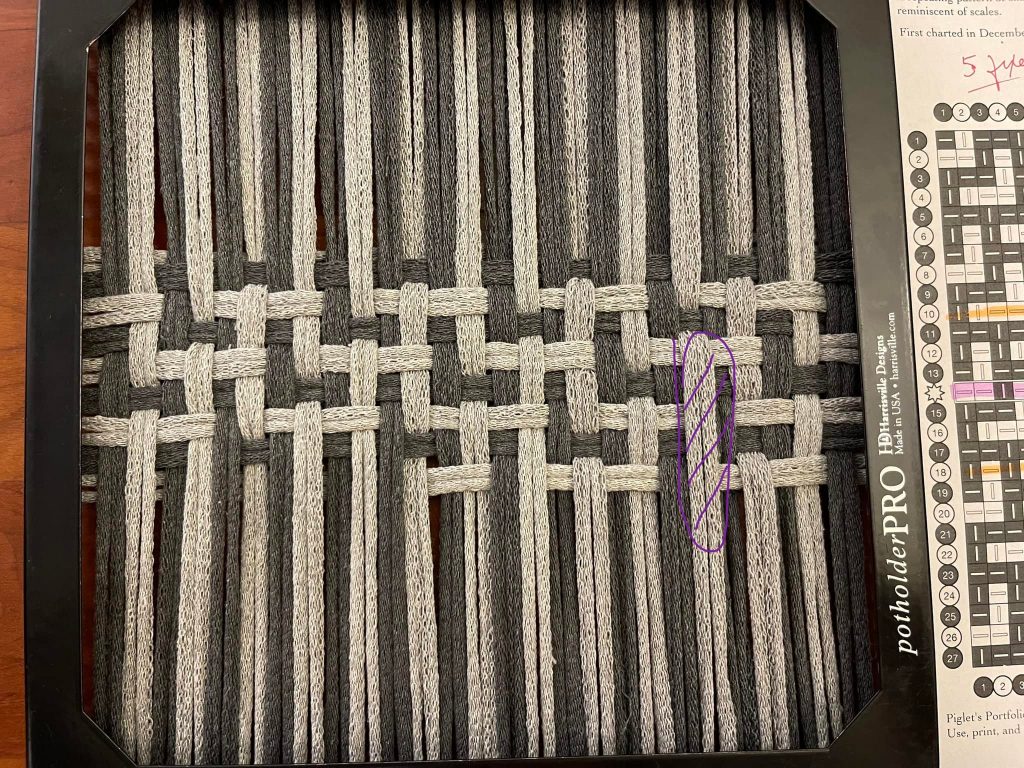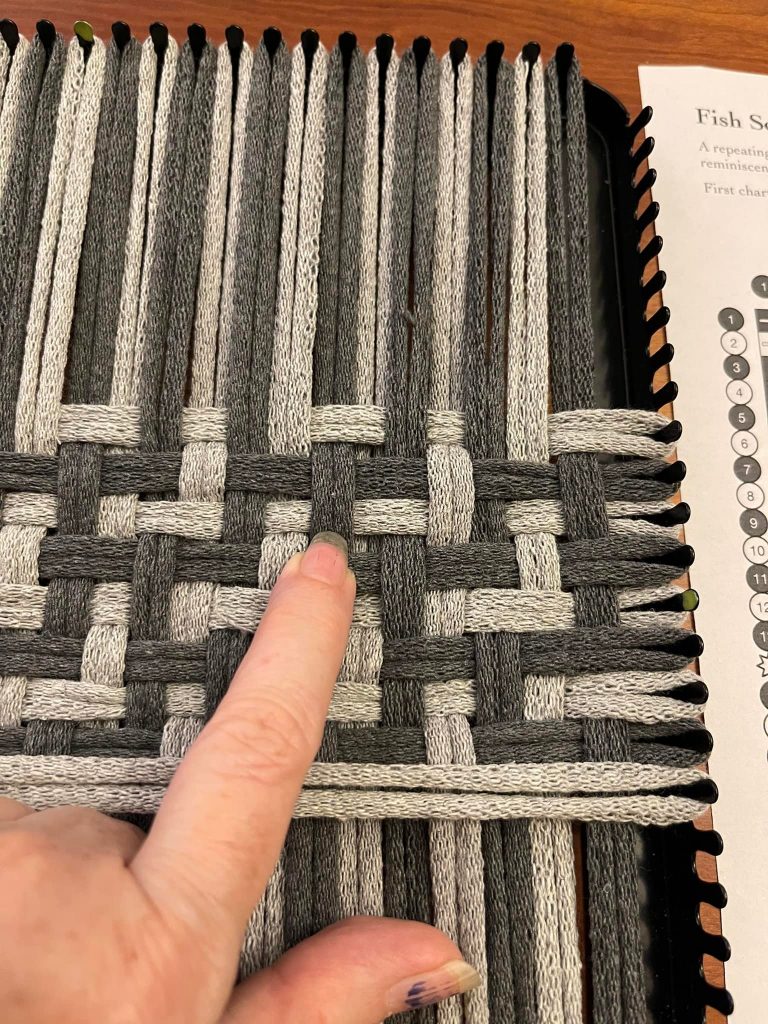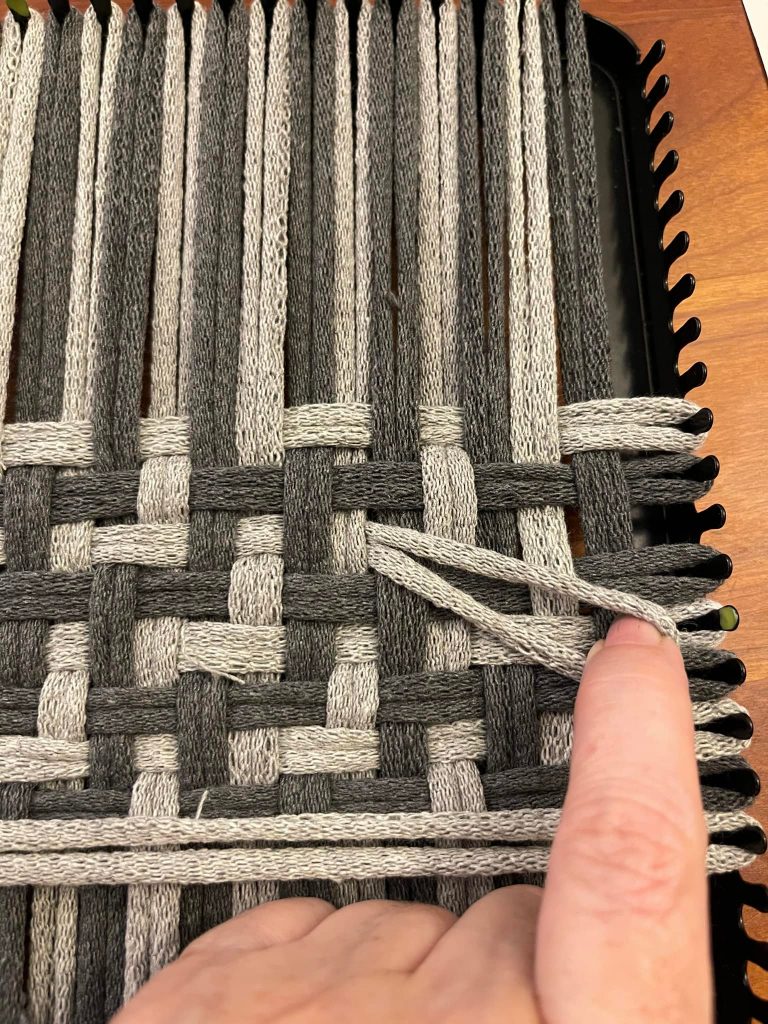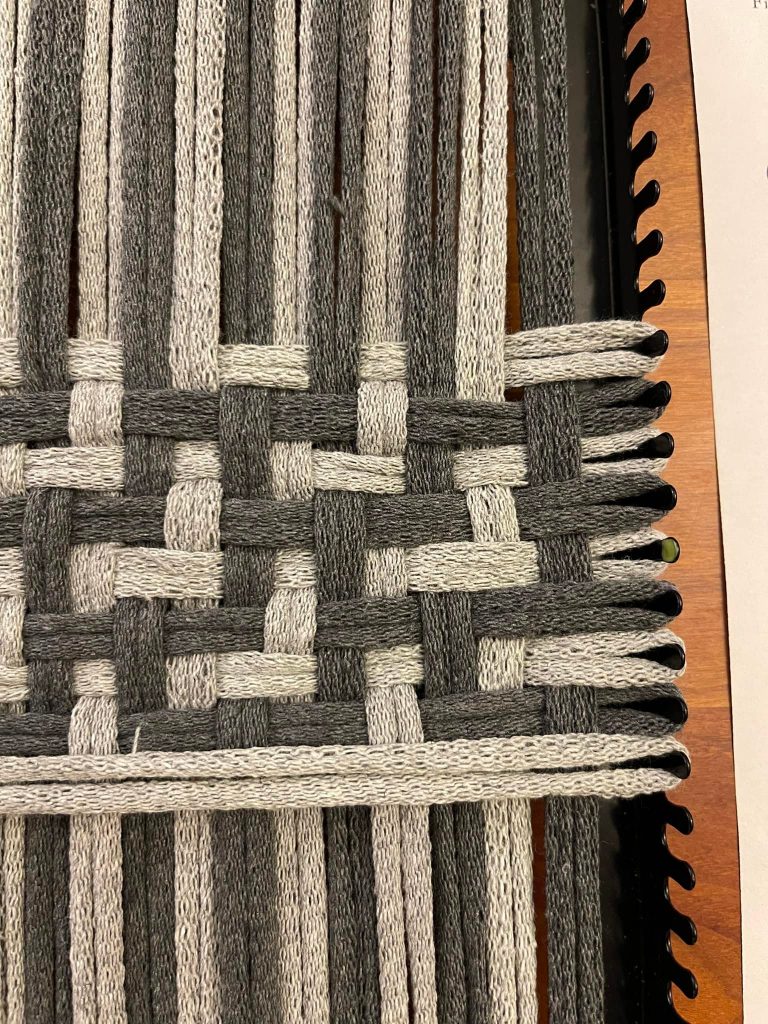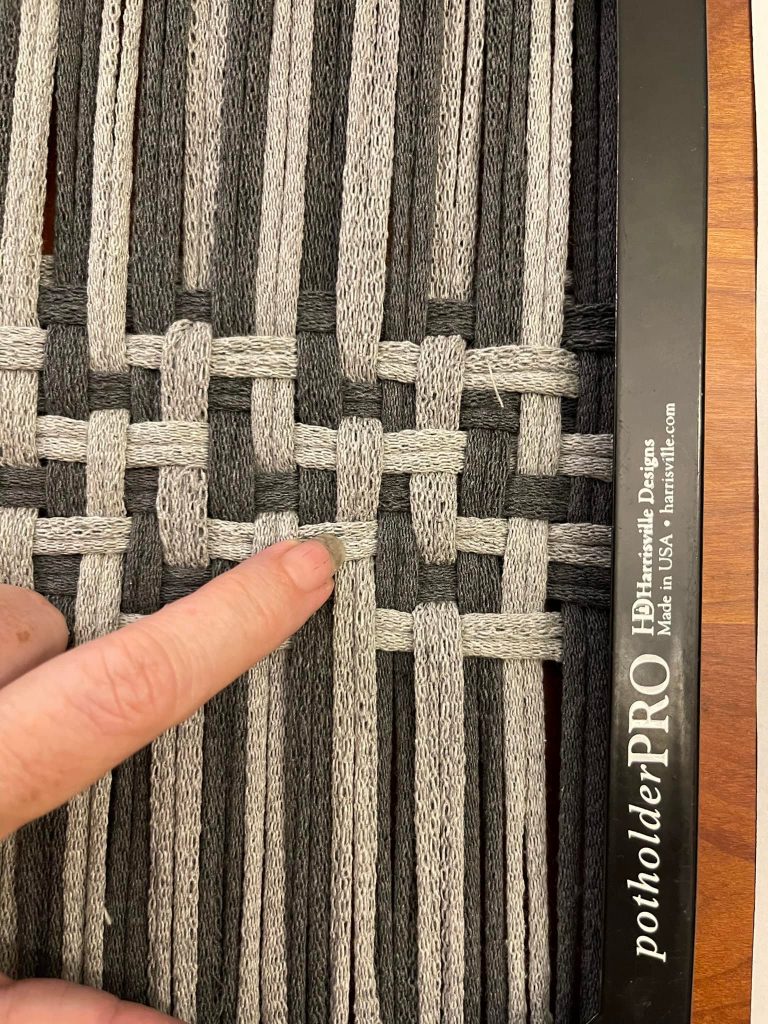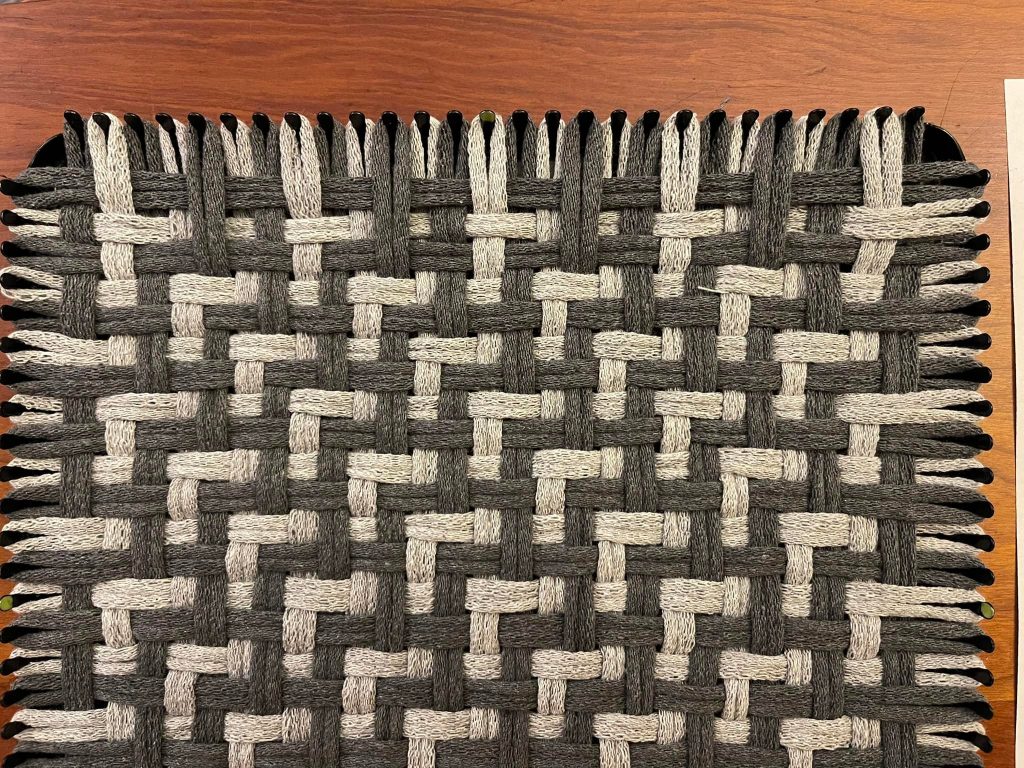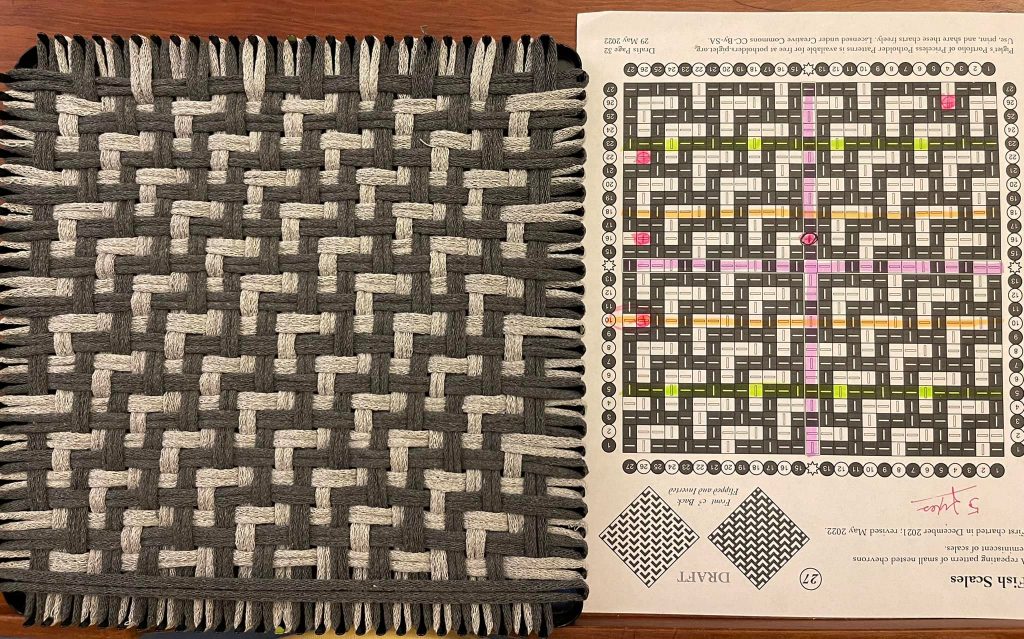Standard potholder looms come with 18 or 27 pegs, but a bunch of our charts show patterns for 17 or 19 loops, or for 26 or 28 loops — what are you to do if you don’t have a loom with that exact number of pegs?
(As an aside, there are vendors who sell nice 19-peg and 28-peg looms, but those are still relatively rare.)
Smaller patterns are easy — just leave one peg free on each side when warping your loom, and then weave and bind off as you normally would. (You can skip the first peg or the last peg, or even one in the middle, whichever you’d like.) Any extra slack that was on one side or the other of your weave will quickly even itself out when you take the fabric off of your loom.
Weaving a larger pattern is a bit trickier, but like many techniques it’s only intimidating the first one or two times you try it, and then it quickly becomes second nature.
To squeeze in an extra loop while warping, choosing a spot where you’re going to double-up two loops on one peg to fit in the extra. Piglet does this in the middle of the loom, but I’ve seen other people do it at one edge or the other.
When you’re weaving in your first two weft loops, take a moment to carefully shift the doubled-up loops apart and weave over and under them as called for in the pattern. Once you’ve done the first few weft loops, they’ll hold the warp in position and you can mostly ignore the fact that they’re sharing a peg.
To squeeze in an extra weft loop, just pull a loop through normally and then stack the ends on top of an already-used peg. You could do this at the start of the process, at the end, or in the middle — but I think earlier is better, because you’ve got more slack at that point.
The picture below shows a 27-peg loom fully-warped with 28 loops (doubled up on the middle peg) and with the first two weft loops woven in (doubled up on the middle peg). Piglet does her weaving from the middle out, but this technique would work just as well if you were starting from either end and working across.
When binding off, treat the doubled-up loops separately — sometimes this will mean that when binding off you’ll need to pause just as you reach the peg with the doubled-up loops so you can manually un-stack one of them on to an adjacent peg to get to the one underneath it.
You’ll see some folks using other techniques, including the use of knitting needles or hairbands to hold the end of the extra loops, and I know Piglet tried things like that when she was first starting out, but the doubling-up technique described here is simpler and works great once you’ve done it a couple of times.
(I imagine that you could use the same technique to squeeze in more than one extra loop if you had a 29-peg pattern, but at some point you’ll run out of space to work.)

